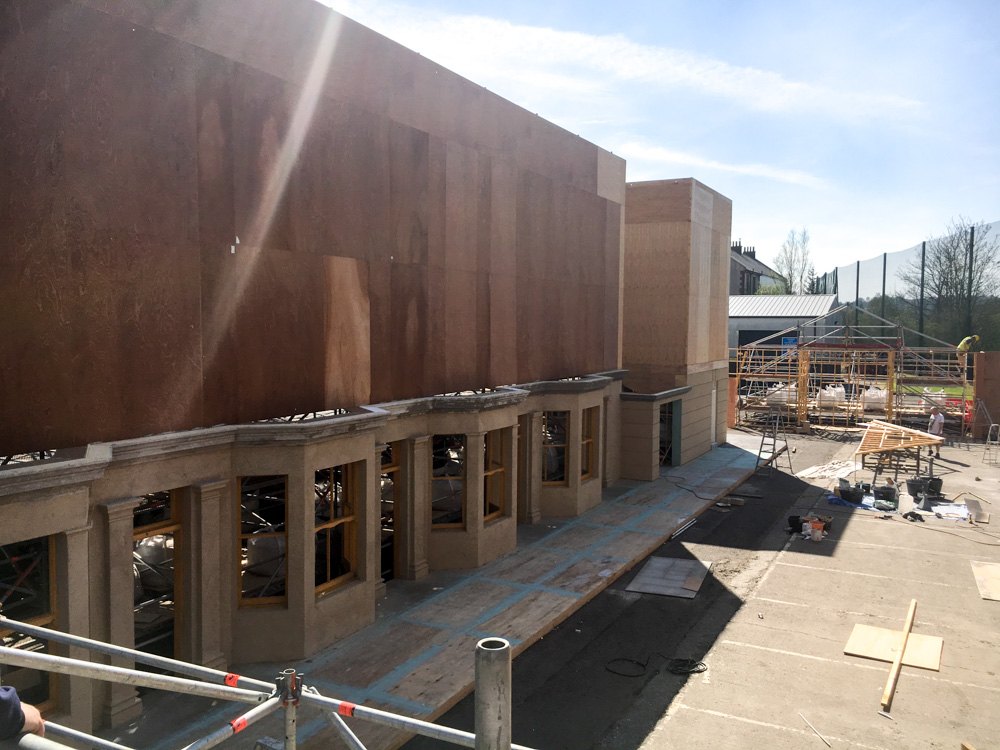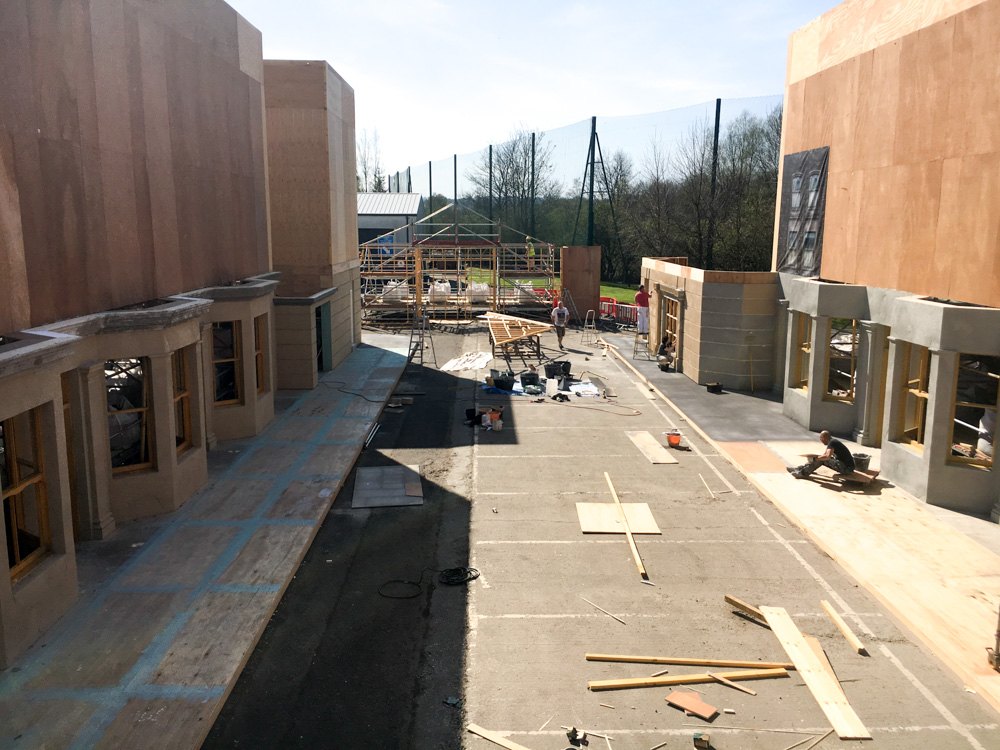When you can’t find a 1940’s London Street scene that’s been demolished because of the bad things that happen, you build one in a BBC carpark in Glasgow. That’s what Pat Campbell’s team did for Rillington Place. Lexhag worked closely with Pat’s team to make a giant PBU (Photo Blow Up) with a twist. Traditionally the art department would create a Photoshopped image of what needs to be seen. Typically these are made into Translight backings and hung outside of sets so views through windows and doors do not become a visual effect. We had the same challenge.

The foundation structure going up
Without the money or time to build and detail a full street scene, we opted to build half and print half. We knew that the wide establishing shots would always need some CG assistance so we started as we meant to go on. A single CG panel was created as a procedural piece, meaning we could scale the output to any size we needed; perfect for a 24M x 7M canvas print. Once the panel was created and the correct bricks and details were finalised, we proceeded to LIDAR scan the bare construction and figure out how big our print would need to be and double check all of the printed components, i.e windows, would line up with their built counterparts. Many renders later, alongside the utilisation of the measuring tool in Photoshop we triple checked the dimensions and went to print.
Below is a low point count preview of the set as captured by our LiDAR scanner. Waggle your mouse to have a nose around.
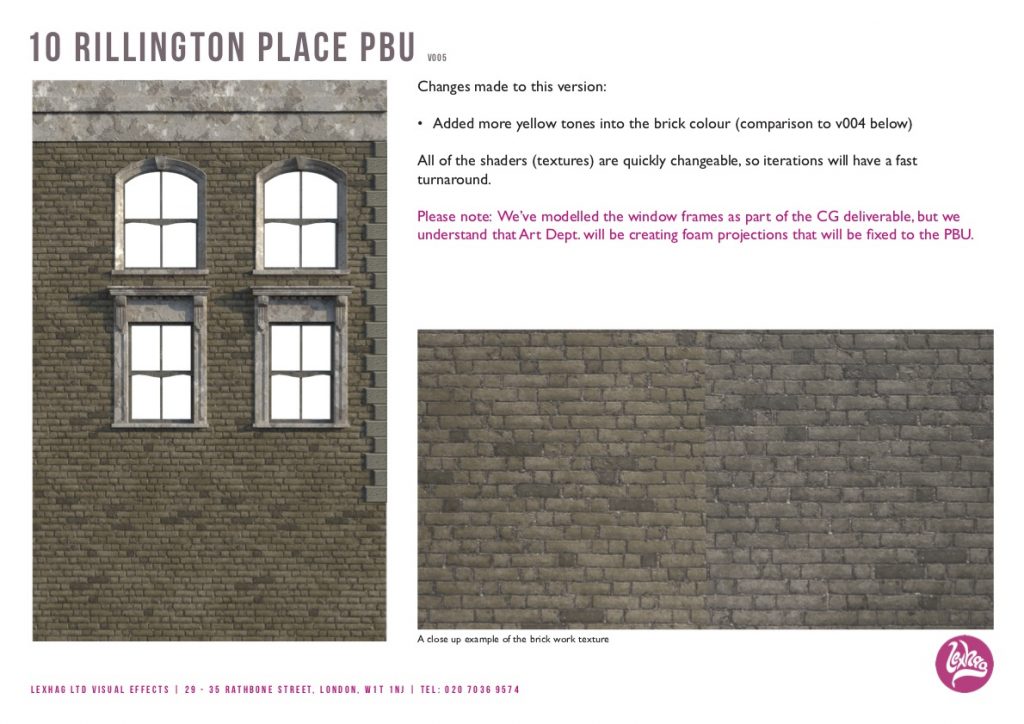
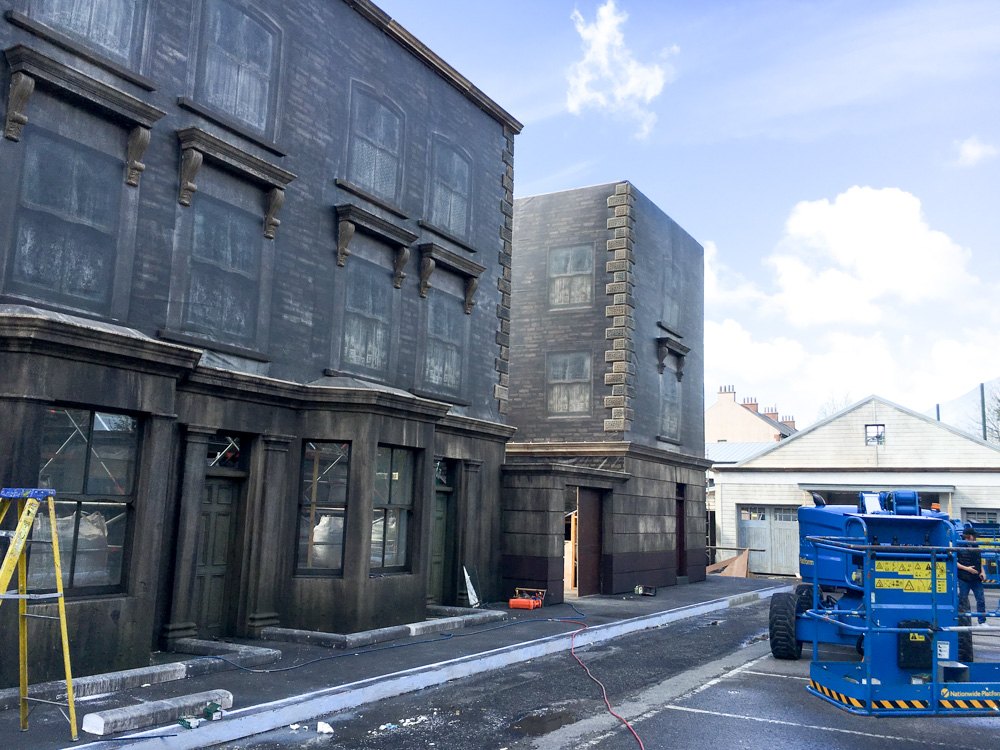
Shots of the printed wrap… 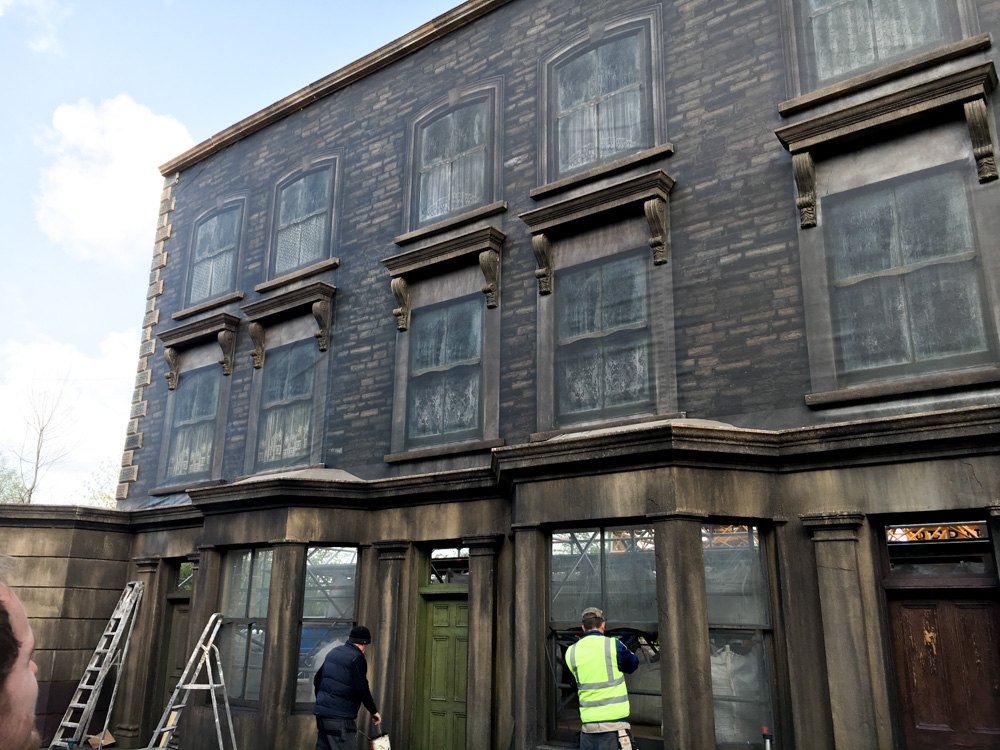
…with some sculpted features.
It was big, even for the industrial printers we used. They worked hard to get it ready, effectively joining several of their widest prints one by one. After a few swatch tests for colour and density in the blacks, the final print was ready to go up and wrap the entire street.
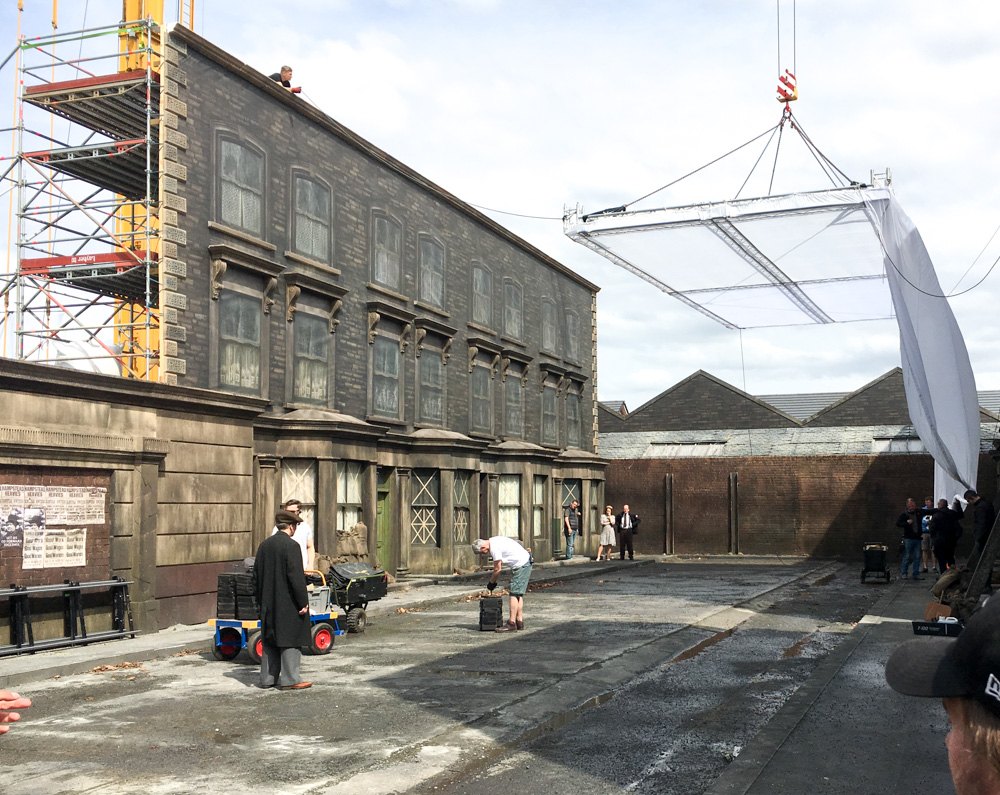
The big idea was to minimise the need for large (and small) visual effects shots for these sequences. We talked extensively about a giant green screen or big flags but the same result was reached, lots of VFX shots, even if you caught a glimpse of what’s not there, it would land back in our studio and production didn’t have the time or money for a long post-production period. We planned each shot with Craig (Director) and built a pre-viz set to convey what the camera would see in each shot and how much would be needed to be printed
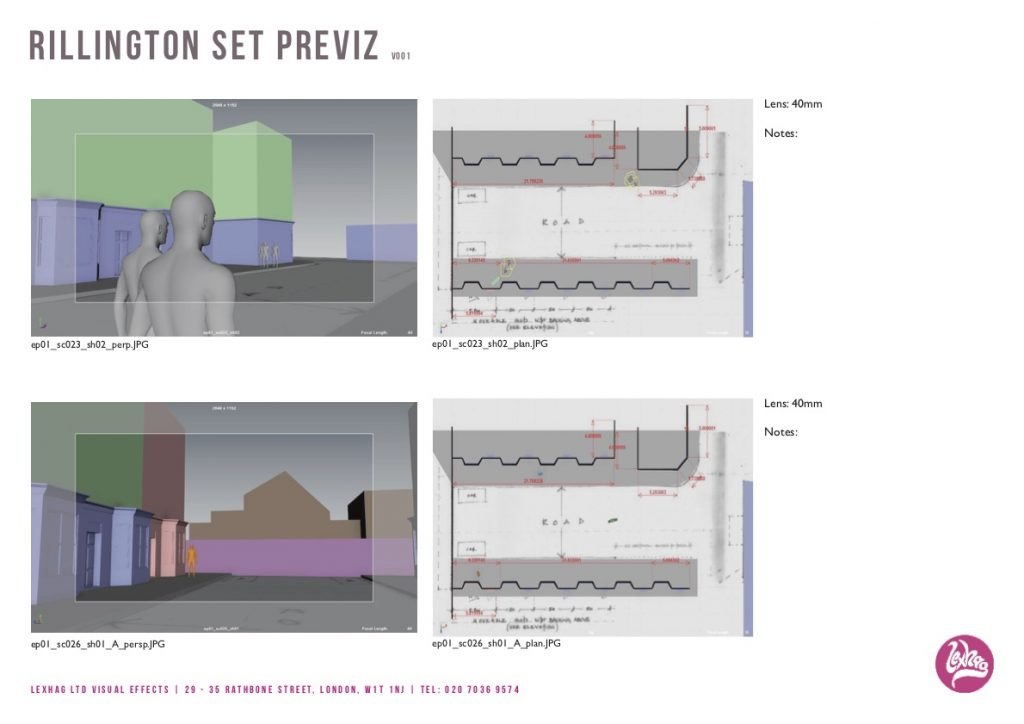
The final piece was a fully wrapped set. A bit of atmos, some polystyrene details and some great lighting; the PBU became real and the illusion of a street was complete. For the production, it meant a lot fewer VFX shots to do on some key sequences. For us, it meant we were not having to replace reflections of a street that wasn’t there, we had real light and shadow to reference and all the hard design work was done at the pre-production stage.
Above is a short reel of examples of the final effects shots, before and after.

